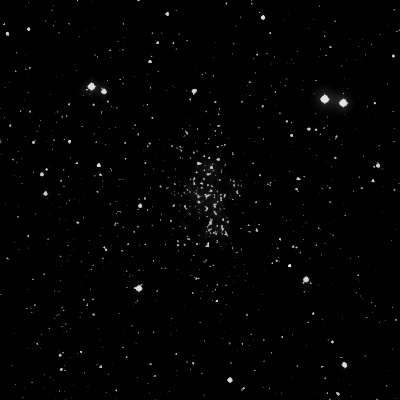
William Herschel discovered NGC 6802 = H VI-14 = h2042 on 11 Jul 1784 (sweep 235) and recorded "a cluster exceedingly small and v compressed stars, in the form of a parallelogram, about 4' l and nearly 2' broad; in the direction nearly of the meridian. But the weather is very hazy. On 18 Jul 1789 (sweep 932) he logged "a compressed cl of considerably small stars, very rich, about 5 or 6' l, 3' br, E nearly in the meridian." But Wolfgang Steinicke reports that Herschel first observed the cluster on 22 Sep 1783 with his 6.2-inch, before starting his sweeps.
On 8 Aug 1831 (sweep 364), John Herschel called it a "rectangular cluster; v m comp; 3' or 4' l; 2' br; stars 14...18m; among B stars."
200/250mm - 8" (10/4/80): bar-shaped N-S, faint, even surface brightness. A few mag 13 stars are resolved. Surrounded by two double stars to the west and north.
300/350mm - 13.1" (8/11/85): about two dozen stars are visible over extensive unresolved haze in an elongated N-S group. Located just east of the "Coathanger" asterism, in line with the long base of the Coatthanger.
Notes by Steve Gottlieb